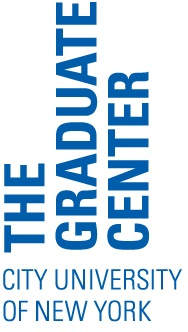E-Learning and Instructional Design – II
By Jiaqi Wang
In our last blog, we talked about the field of e-learning and instructional design in general, and some useful resources to get interested people started, e.g., blogs, books, LinkedIn groups, and professional associations. For this blog, the main focus is placed on several common practical issues facing instructional design (henceforth, ID) starters and pertinent suggestions from experts in this field. (Most of the content is from the past panel discussion on ID in Versatile PhD Forum, which will be archived and open to the public late this summer. Many thanks to its founder, Dr. Paula Chambers.)
Issue One: Common settings in which E-learning and ID is practiced
- Higher education: Putting (at least part of) courses online is getting increasingly common in higher education. I believe we all have experience with LMS (Learning Management System), e.g., Blackboard, Moodle, etc. This trend opens the market in higher education for IDers whose job is to facilitate this transition process.
- Corporate training: ID jobs in this field can take a plethora of forms. Any type of learning in a corporate setting needs ID specialists to tackle potential problems. Some examples are designing enterprise software training programs at a software company, or developing employee efficiency boosting programs.
- Online business: One important component of ID concerns presentation. In other words, the way IDers present new information can potentially facilitate the learning process. Therefore, in order to get their messages across to potential customers in a clear and logical way, online business owners must consider using ID techniques to organize and present product information in a way that is most accessible to potential customers.
- Science education companies: This setting might be a bit narrow. Companies that provide experimental tool kits for high schools and other science education institutes need IDers with specific background in the target scientific field to design materials and provide relevant training.
Issue Two: Do we need specialized education/certification for ID jobs?
It depends. As mentioned above, ID jobs in science education need specialists in science to conduct the program design. These ID positions are normally taken by PhDs specializing in the target field but who might not have training in ID per se. Companies with such specific foci will train their IDers how to use ID strategies and techniques afterward.
Other less domain-specific ID jobs expect applicants with knowledge and experience in education and instructional technology. Having a B.A. or M.A. in relevant fields is a good start. If not, however, you can also demonstrate your qualifications through your teaching experience and how that can be transferred to instructional design in some specific ways. Some people may consider getting an M.A. or a certificate specific to ID. This is of course an option, but we should keep in mind that education is always a means to an end but not the end itself. As suggested by ID experts, building and maintaining a portfolio showcasing your ID skills is a better choice. Check out more discussion on this issue here.
Issue Three: Do we need specific IT skills?
Many prospective IDers are motivated to work in this field by their love for learning and curriculum design. However, it seems that this love along with multiple-year teaching experience will not be of great help, contrary to common sense. Many applicants stop or postpone their applications when they see job requirements like this: Proficiency with design/development tools such as Adobe Dreamweaver, Fireworks, Captivate, Articulate, HTML, and CSS. Also, familiarity with project management models, e.g., ADDIE. According to ID experts from the panel discussion in Versatile PhD Forum, two scenarios are possible:
- Situation 1: the list of ID software programs may be a wish list. Companies usually do not have strict IT skill requirement for their IDers because on a development team there are always computer specialists who will do the programing. IDers normally learn the specific programs that their companies use while doing the job but they are not required to show a working knowledge of them when applying for the job.
- Situation 2: it may be the reality (possibly due to recession) that nowadays companies do expect their IDers to know the software they are using. This might not be as bad as you think. As suggested by many ID experts, if you have been maintaining a portfolio, you are in actuality using IT skills (web-based tools such as Pinterest and WordPress) for pedagogical purposes. All you need to do is to elaborate on this piece of IT experience and your capacity to learn new software programs. In addition, it will not hurt if you take some time to play around with the required ID programs (they normally have one-/two-month free trial period), and try to incorporate your designs using this new technology into your portfolio. ID experts recommend the two most commonly used programs – Captivate and Articulate.
General suggestions from the discussion: a. create a portfolio showcasing your ID and also IT skills (Click here for a great example); b. volunteer to work on ID projects and develop instructional content for non-profits or other organizations.
Here is a list of professional associations related to E-learning and instruction design:
- Association for Educational Communications and Technology (AECT)
- Association for Learning Technology (ALT)
- American Society of Training and Development (ASTD)
- Commonwealth of Learning
- EDUCAUSE
- Florida Distance Learning Association
- International Society for Design and Development in Education
- International Society for Performance Improvement (ISPI)
- Joint Information Systems Committee (JISC)
- North East Regional Computing Program (NERCP)
- Society for Applied Learning Technology (SALT)
- The ELearning Guild
- United States Distance Learning Association (USDLA)
– Jiaqi Wang




